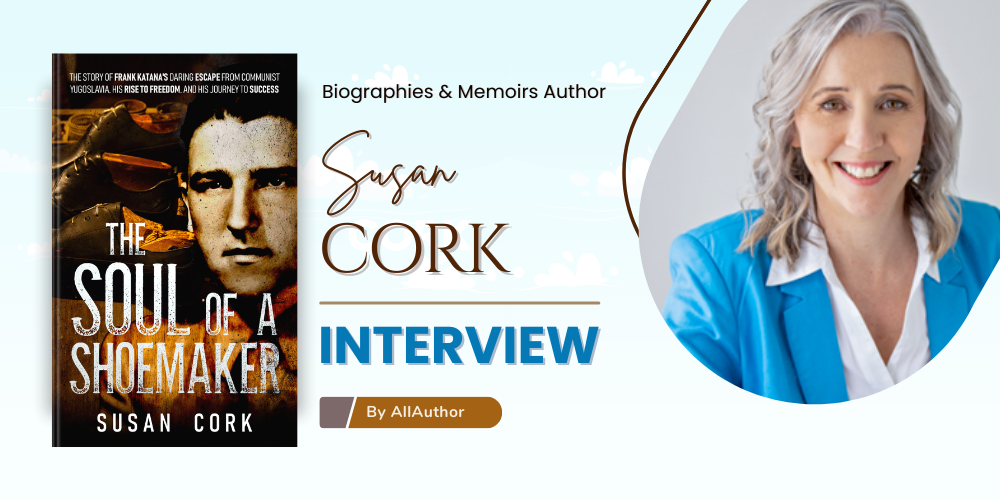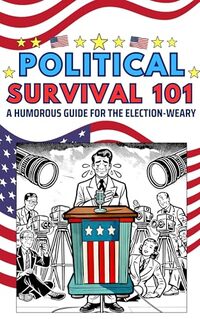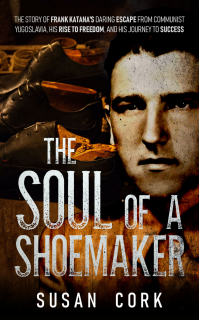Susan Cork Interview Published on: 05, Sep 2023
 Where were you born, and what was your childhood like?
Where were you born, and what was your childhood like?
I was born in Toronto, Canada, to parents who had braved the journey from the former Yugoslavia in search of a better life. In those early years, our circumstances were humble. My father, arriving with little more than determination, built his business from scratch. When my mother joined him, their resilience was our family's backbone. We might have faced financial constraints, but our home overflowed with warmth and love. My mother went to great lengths to ensure our home was clean and that we always had a nourishing meal waiting. I can still hear her tales of tirelessly scrubbing the floors, attempting to fend off persistent ant infestations. Thanks to my father's tenacity and vision, his small venture blossomed into a grand success as the years passed. My formative years in Scarborough, Ontario, in the 1970s, are filled with beautiful memories that portray a picture of a family that grew stronger with each challenge.
Can you tell us about your journey as a digital designer and author? How did you get started in this field, and what led you to focus on digital design and publishing?My roots in the digital realm can be traced back to my foundational skills in graphic design and website development. Leveraging these abilities, I ventured into the burgeoning print-on-demand (POD) world, diversifying my portfolio from apparel design to KDP publishing. My journey as a freelance graphic and WordPress designer saw me helm projects for local startups and established corporations. This seamless design and web management integration paved my way into digital publishing. I took a risk in 2015 and released an online course on e-commerce on Udemy. I immersed myself in classes focused on KDP publishing, from notebooks to colouring books and planners, inspired by the response to it and eager to learn more. These abilities and the stories I had grown up with inspired me to start and finish my first novel.
What role did your mother, your brother, and other family members play in helping you gather the stories and memories of your father for this book?This book was a team effort, utilizing the combined memories of my family members. The support of my mother and brother was crucial during this process. Their vivid recollections of specific incidents and times gave the story credibility and depth. I emailed and messaged our Croatian relatives on Facebook to reinforce the narrative. My father's sister kindly shared her experiences and was a crucial input. It was challenging to overcome the language barrier because they don't speak English, and my ability to speak Croatian has worsened over time. But, with the assistance of tools like Google Translate, we were able to bridge the gap and ensure that their stories found a rightful place in the tapestry of my father's journey.
What inspired you to write "The Soul of a Shoemaker" and share your father's story with the world?The tale of my father's resilience and perseverance had long been a story I yearned to share. However, life's many obligations—my career, family commitments, and intricate situations surrounding our family business—often took precedence. With its imposed lockdowns, the onset of the COVID pandemic offered an unexpected silver lining. It gave me pause and introspection to bring my father's journey to the forefront. Although there are many immigration stories available, my father's story stands out for various reasons that I haven't often seen. The pandemic's modern problems, the lockdowns, and the ensuing government orders evoked unsettling comparisons to my father's experience living under communist authority. I felt driven to explore these recurring themes, contrasting the realities many have recently experienced with the experiences of living under strict regimes. This exploration brought home how crucial freedom is, how painful it is to be without it, and how far people will go to get it back. The universal themes of sacrifice, familial ties, and eternal love are woven throughout this historical tapestry; these ideas further strengthened my resolve to tell this story to the public.
What inspired you to establish your trademarked brand, Adam and Marky ®? How did you come up with the concept, and what goals did you have in mind when creating this brand?My young sons' creative imaginations laid the foundations for the Adam and Marky® brand, and they created these two endearing characters. My husband, Stuart, and I were fascinated by their stories of Adam and Marky's mishaps and recognized promise in their made-up characters, so we registered the names as a trademark. As a family, we breathed life into these characters, crafting original stories and penning a children's book that followed the duo—a pair of best friends who, despite their best intentions, always seemed to find mischief. In addition to writing books, we produced animated short films, with our sons actively participating in the production. We have big plans for the Adam and Marky® brand. To ensure that the adventurous spirit of these two characters reaches and connects with audiences everywhere, we aim to weave even more stories and create a rich series of animated films.
Could you share some insights into your creative process? How do you approach the design and development of your digital products, such as planners, coloring books, and storybooks?A combination of cutting-edge tools and keen market insights is required to navigate the complex web of digital product design successfully. I utilize Tangent Templates, an online programme that ideally mixes user-friendliness and versatility, to construct my digital planners. Aside from the Adobe set of tools I also use Canva and Powerpoint. I can create planners with these programmes that are not only useful but also beautiful. I use Book Bolt and Publisher Rocket to stay current on market trends with books, especially those found on online retailers like Amazon. These tools have a cost, but the investment is worthwhile. To succeed in this profession, one must be familiar with market dynamics and the resources needed to create products that cater to those trends. Previously with the support of Design Pickle where we hired illustrators through them, the process of creating our characters for storybooks and colouring books got underway. They created captivating illustrations from our fantastical universe of Adam and Marky. I'm eager to use AI's potential now that the character foundations are solid, especially with the help of platforms like Midjourney. This enables me to continuously develop and bring in a new phase of work that centres on our favourite characters.
What challenges have you faced in the digital design and publishing industry, and how have you overcome them?There was little competition, especially in markets like calendars, planners and notebooks, when I started dabbling in digital design and publishing. Seeing the possibilities, I boldly decided to create and maintain my own brand. Challenges, however, came along with opportunities. Relying on Amazon ads to promote books became expensive, especially in a market that was becoming increasingly crowded. To stand out in the ferocious competition, a distinctive strategy was required. I broadened my reach rather than relying primarily on one platform. I looked into Etsy, which was a great resource for digital downloads. I didn't limit my creativity to books; I launched my own fashion lines and collaborated with print-on-demand companies like Printful. I created various items, such as calendars and colouring sheets, using the flexibility of digital design, which I subsequently provided as downloaded printables on Etsy. Moreover, after seeing the potential of the educational market, I started making instructional printables, which have attracted a new following on websites like Teachers Pay. By taking a holistic approach, I could overcome my obstacles, reach out to many market sectors, and establish a strong brand presence.
How did you decide on the structure and style of the book, The Soul of a Shoemaker? Did you face any challenges in capturing the essence of your father's journey?When I started writing about my father's extraordinary journey, I intended to create a brief biography, mostly for my immediate family and friends. But the start of the COVID outbreak served as a trigger for me, forcing me to reconsider the book's course. Given the seriousness and relevance of his experiences, it was crucial to go further and illuminate the complexities of his journey in a way that connected with a larger audience. In restructuring "The Soul of a Shoemaker," I sought to balance retaining its heartfelt essence and crafting a compelling and understandable narrative. While the unwavering support from family and friends has been a cornerstone of this project, the journey wasn't without its challenges. One poignant hurdle was my inability to revisit memories and gather finer details from my father. Although I had documented his tales over the years, his battle with Alzheimer's disease hindered any further exploration. This limited access to firsthand recounts was a void I constantly felt, but it also pushed me to stitch together his legacy with even greater care and reverence.
Did writing this book and exploring your father's story teach you anything new or change your perspective on his experiences or your own heritage?Investigating my father's past and the environment of his adolescence shed light on aspects of our heritage that I hadn't previously seen. I quickly realized how drastically different the privileges we take for granted now are from the horrible conditions he had to deal with. This exploratory journey brought home how easily we may often take for granted the liberties we enjoy, freedoms that were fought for and earned through the sacrifices of earlier generations. I've realized that many in the younger generation, including my sons, might be largely unaware of the challenges and sacrifices that families like ours endured. While I've always held our cultural heritage in the highest esteem, this literary project made me much more appreciative of it. I hope that "The Soul of a Shoemaker" provides a window into those experiences, fostering appreciation and understanding in readers.
As an entrepreneur in the creative industry, how do you balance your creative work with the business aspects of running Ginzburg Press? What strategies have you found effective in managing both?Managing the combined responsibilities of a creative visionary and an entrepreneur is undoubtedly tricky. At Ginzburg Press, the operational part of the business is just as crucial as the creative side. Thanks to meticulous record-keeping with spreadsheets, the administrative part of our operations has been streamlined, giving us a clear picture of the duties and deadlines. Tools like Dropbox and Google Drive have been instrumental in managing creative assets. Their accessibility across devices ensures that I can seamlessly tap into our work repository, whether at my desk or on the move. Grammarly has been invaluable for the written components, allowing for swift reviews and ensuring our content maintains the highest quality. Over the years, the synergy of these tools and a disciplined approach has been vital in balancing the artistic and business facets of Ginzburg Press.
In addition to your digital products, you also distribute merchandise, books, and animated short films. How do you decide which projects to pursue, and what factors do you consider when expanding your product offerings?Our reactive and proactive strategy determines which initiatives or items to pursue. We carefully monitor the market's pulse while paying special attention to current trends and general economic conditions. For instance, we saw the importance of home-based activities during the COVID lockdown. This resulted in the creation of goods like our Quarantine Recipes Notebook and a variety of printables that can be downloaded, like colouring books and kid-friendly games. Testing the waters is a common part of our strategy. Whenever we spot a prospective market opportunity or demand, we'll develop a small number of products to test the market's reaction. We choose whether to broaden, improve, or change course along that path in response to user feedback and adoption. In order to remain adaptable in our industry, it is crucial to keep current with trends on websites like social media and news sources. We maintain the relevance and appeal of our product offerings through this ongoing and adaptable strategy.
What message or theme do you hope readers will take away from "The Soul of a Shoemaker"?At its core, "The Soul of a Shoemaker" is a testament to human resilience, tenacity, and the indomitable spirit of hope. I aspire for readers to absorb the essence of perseverance – that no matter the odds, one should never relent. Embracing risks can lead to unimaginable rewards, especially when driven by the quest for freedom, love, and personal fulfillment. It's about pursuing one's passion with unwavering determination. As my father, Frank, eloquently said, "You have to believe in yourself…You need that drive to succeed." This sentiment embodies the story's heart, and I hope it resonates deeply with everyone who turns its pages.
What advice would you give to aspiring authors and digital designers who are looking to establish their presence in the creative industry?I emphasize the importance of thorough research to aspiring authors and digital designers eager to carve out a niche in the creative landscape. The industry is huge, and understanding its intricacies can set a solid foundation for your journey. Start by zeroing in on a specific area that speaks to you personally or is recognizable to you. This connection often fuels passion and can be the springboard for creativity. By mastering and bringing a fresh perspective to that niche, you position yourself distinctively and pave the way for sustained success. Your voice and vision will ultimately set you apart in a world bursting with creative potential. Maintain your commitment, keep learning, and continually look for ways to offer something fresh.
How many plot ideas are just waiting to be written? Can you tell us about one?I have endless plot ideas ready to be put on paper in the vault of my imagination. I find the blending of historical fiction and the supernatural very intriguing, and this genre has a lot of promise for compelling storytelling. Our family's cottage in Northern Ontario, with its serene charms and magnificent vistas, has always been a tremendous source of inspiration. I've heard many fascinating stories about this peaceful place throughout the years. I want to write a collection of stories about strong people dealing with paranormal elements while navigating a tapestry of historically significant events. It promises a blend of rich historical knowledge and an appeal to the unknown, a realm I'm anxious to explore in my art.
Looking ahead, what are your future goals and aspirations for your work? Are there any new projects or ventures that you're excited about?My ambitions are multifaceted as I look to the horizon. While I'm excited to delve deeper into new publication ideas, particularly in historical and supernatural fiction, I'm also enthusiastic about the technological improvements in the creative sector. I'm particularly interested in immersing myself in AI-driven graphics via sites like Mid Journey and exploring the potential of AI animation and video tools. It's an exciting period in history as the convergence of creativity and technology continuously expands. We're on the verge of a new era in which these technologies will become vital for creatives, and I'm excited to use them to elevate and redefine my work.
Share Susan Cork's interview
Susan Cork is a remarkable creative force in the world of digital design and publishing. With an unwavering passion for her craft, she has carved a distinctive niche for herself in the creative landscape. One of Susan's notable achievements is the establishment of her trademarked brand, Adam and Marky ®, which has become synonymous with creativity and innovation. Her dedication to pushing the boundaries of digital design and publishing continues to inspire and captivate audiences worldwide.




